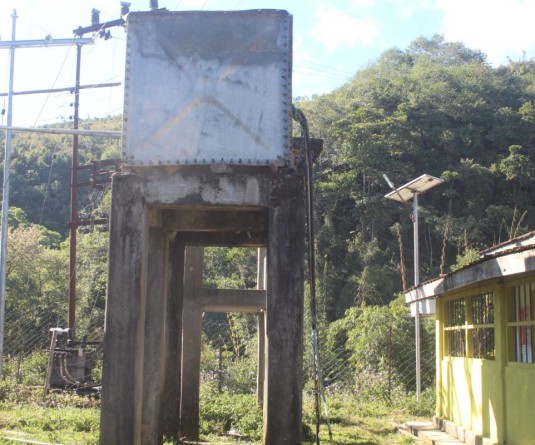
The ‘Nagaland Vision 2030’ document was unveiled by Nagaland governor, PB Acharya on December 2016. The document outlines the broad contours of development which the State seeks to undertake over the next decades or so. In continuation of its series on ‘Vision 2030,’ the Morung Learning highlights key strategies for adopted for Agriculture and Allied Sectors. Background: According to the 2015-16 GSDP figures, the agricultural sector accounted for about 30 percent of the State’s GDP compared to the share of the secondary sector at around 15 percent and share of the tertiary sector at around 55 percent. There were about 4, 20,000 agricultural workers as per Census 2011. It is thus clear that any development strategy for Nagaland must begin with the agricultural sector. While the agriculture and allied sectors have brought out a notable Vision 2025 document towards securing this objective, the Vision 2030 opined that it is imperative for the departments to quickly undertake scientific and accurate methods of planning land use that will give more accuracy for production projections as well as for the purpose of monitoring and evaluation of their programs. Integrated Intensive Inclusive Agricultural Clusters (IIIACs) Strategy: 
 To realize the vision of an agricultural led development strategy, the Vision 2030 introduced the concept of Integrated IIACS which shall provide the fuel and gumption to the growth processes. Along with restructuring the flow of development funds presently available under the State budget for agriculture, special funds will be needed to set up IIIACs to encourage optimization of traditional agricultural crops utilizing technical inputs and integrating with Departmental activities. Examples include cut-flower clusters in Kenya, the grape clusters in Maharashtra and livestock clusters in China. The IIIACs will facilitate interactions between farmers and agro-processors/exporters, between agro-processor/exporter and also facilitate stable relationship between government and farmers/agro-processors/exporters. Although the exact amount of investments required for IIIACs will vary according to crops and location, the Vision 2030 gave an estimate of at least 11 IIIACs in the next three years @ Rs 10 crore per year per IIIACs, the annual requirement will be Rs 110 crores per annum for the next five years. Step towards tackling the issue of IIIACs Soil Mapping and Crop Zonation It is imperative to expedite soil mapping exercises with the aid of modern technology in the State to identify the suitability of the types of soil for cultivation of various crops by undertaking soil survey, testing and analysis of soil health. From the data on production and area sown for crops, fruits, vegetables and spices for the period 2001-2015 provided by the Agriculture and Horticulture Departments, the crops which dominate the various districts in terms of area and production have been identified. Forest, Forestry and Agro Forestry: While discussing agriculture, the aspects of land, environment, climate and forest cannot be alienated. A sector closely related to the agricultural sector is forestry. The Forest Department’s goal to increase the dense forest cover to at least 45 percent by 2025 is significant as preservation, conservation and expansion of forest cover becomes critical in the backdrop of the growing concerns of global climate change. Although, State Action Plan on Climate Change (SAPCC) is already in place, Climate Change issues need to be addressed through suitable mitigation and adaptation measures, mainstreaming low carbon development strategy, strengthening capacities for environmental protection and increasing the carbon sink availability. The facets of forest in terms of environmental implications and as one of the rich natural resources of the State with economic potential needs to be balanced carefully and methodically. Medicinal and Aromatic Plants (MAPs): The other aspect of enhancing the forest cover is through agro forestry. The present practices in the State of developing of shade loving cash crops like Cardamom in the Aboi and Chen areas of Mon district and the expansion of Rubber plantations especially along the foot hills must be encouraged. The other practice to be promoted is the Silvo-medicinal system in which integration of trees and Medicinal and Aromatic Plants (MAPs) take place. While MAPs has tremendous potential in Nagaland, the efforts of the Nagaland Bio Resource Mission (NBRM) has not been recognized but has been relegated to the background with limited funding. Organic Cultivation: The State has a comparative advantage for the development and promotion of organic cultivation and must therefore devise measures backed by appropriate policy framework to convert the ‘Organic by default’ areas into ‘Organic by design’ for specific crops with high market value and demand. The endeavour should be production of 100 percent SAFE food through Good Agricultural Practices (GAP) and natural indigenous production systems duly certified by an appropriate State agency for instant recognition as Naga food brand with Unique Selling Proposition (USP) as well as brand value such as pristine, safe, exotic etc for both fresh and processed products. Honey and Beekeeping: Nagaland has the potential to economically carry more than 22 lakhs bee colonies from the available bee foraging area of about 10,942 Sq.km (66 percent of the total area). It has potential to produce about 10,000 metric tonnes of honey and 10 metric tonnes of bees wax which will lead to substantial commercial and employment opportunities. The Vision for the Mission is to produce 2000 metric tonnes of honey and 2 metric tonnes of wax by 2030 valued at about Rs 100 crores annually. A reasonable target, adequate resources should be provided for the activities such as research studies, apiculture development and promotion, industry service and marketing for development of apiculture as an enterprise in the State. Bamboo: The development of bamboo in the State can be taken up from two perspectives; as a resource and as an enterprise. Nagaland has 5 percent of the total growing stock of Bamboo of India with an annual yield assessed at 8.35 lakh metric tonnes worth over Rs 200 crores. This fast regenerating plant has great economic potentials and can be made a commercial product through value addition and appropriate technology intervention. Mechanization and Modernization: If the produce of the farmers is to get acceptance in the market, apart from the volume of production, the quality of the products is critical. For this, high investment is required to upgrade and improve the agricultural technologies. Along with it research and development are necessary for improving the local technologies. This calls for establishment of a Central Agriculture University in the State and with affiliation of the existing institutes like School of Agriculture Sciences and Rural Development (SASRD), Central Institute of Horticulture (CIH) and the newly inaugurated Veterinary College. Moreover college of fishery, college of forestry, the Indian Institute of Science Education and Research (IISER) should be established in the State. Veterinary and Animal Husbandry: The shortfall in meat, milk and egg production in the State leads to heavy import of these items valued at more than 200 crores rupees per annum. In order to minimise the cost and to increase the quantum of production of meat, there is a pertinent need to establish feed and fodder processing units with credit linkages. Besides the conventional meat products, there are also other areas of developing unique indigenous breeds of animals like Mithun (Bosfrontalis). The State should therefore strive to realise the potential of mithun as a source of meat, milk, hide and draught power. Irrigation and Fishery: Water is rapidly becoming a scarce commodity in the State. To stimulate commercial agriculture, the endeavour is to provide assured irrigation round the year through conservation of river corridors with watershed development, springshed development, groundwater development and to encourage adoption of new technologies for conservation of water. The fishery sector in the State may not look as good a potential as other areas along large rivers and seas. But with regular heavy rainfall, the water bodies created can be conserved and converted for commercial fishery. The fast flowing clear streams have potential for riverine fish, harnessing of which, will not only supplement the food needs of the people but can also be developed for angling and other sports to promote tourism. Reform and Restructuring The goals laid down in this Vision document cannot be achieved without fundamental changes in the structures of the agriculture and allied sector with particular emphasis on convergence. To ensure this, there has to be a degree of decentralisation as well as considerable level of centralisation. A healthy mix will ensure entry of private initiative and will promote balanced growth. Institutional Changes: Seventy one percent of the population of Nagaland is rural. By default 50 percent of the work force and 63 percent of the households are engaged in farming. One of the reasons for slow progress in agricultural specialisation has been the fragmented and beneficiary oriented approach to agricultural development coupled with the multiplicity of implementing agencies with little or no coordination. The office of the Agricultural Production Commissioner(APC) which deals with coordination of the sectors require a restructure with more powers and should focus on production and downstream activities of not only drawing up strategies but also closely monitoring production and other post-harvest activities. The office of APC should therefore be converted into a Commissionerate and renamed as the Agricultural Commissionerate (AC) with its executive branches at the district level to ensure co-ordination as much at the district level and down to the cluster levels which shall be the vehicles for implementing the vision for the agriculture and allied sectors. Such a Commissionerate should be formed without creating any new posts but by drawing both the manpower and the posts from the existing and in some cases, overstaffed departments of the sector. The development of the IIIACs shall follow the steps given below.
To realize the vision of an agricultural led development strategy, the Vision 2030 introduced the concept of Integrated IIACS which shall provide the fuel and gumption to the growth processes. Along with restructuring the flow of development funds presently available under the State budget for agriculture, special funds will be needed to set up IIIACs to encourage optimization of traditional agricultural crops utilizing technical inputs and integrating with Departmental activities. Examples include cut-flower clusters in Kenya, the grape clusters in Maharashtra and livestock clusters in China. The IIIACs will facilitate interactions between farmers and agro-processors/exporters, between agro-processor/exporter and also facilitate stable relationship between government and farmers/agro-processors/exporters. Although the exact amount of investments required for IIIACs will vary according to crops and location, the Vision 2030 gave an estimate of at least 11 IIIACs in the next three years @ Rs 10 crore per year per IIIACs, the annual requirement will be Rs 110 crores per annum for the next five years. Step towards tackling the issue of IIIACs Soil Mapping and Crop Zonation It is imperative to expedite soil mapping exercises with the aid of modern technology in the State to identify the suitability of the types of soil for cultivation of various crops by undertaking soil survey, testing and analysis of soil health. From the data on production and area sown for crops, fruits, vegetables and spices for the period 2001-2015 provided by the Agriculture and Horticulture Departments, the crops which dominate the various districts in terms of area and production have been identified. Forest, Forestry and Agro Forestry: While discussing agriculture, the aspects of land, environment, climate and forest cannot be alienated. A sector closely related to the agricultural sector is forestry. The Forest Department’s goal to increase the dense forest cover to at least 45 percent by 2025 is significant as preservation, conservation and expansion of forest cover becomes critical in the backdrop of the growing concerns of global climate change. Although, State Action Plan on Climate Change (SAPCC) is already in place, Climate Change issues need to be addressed through suitable mitigation and adaptation measures, mainstreaming low carbon development strategy, strengthening capacities for environmental protection and increasing the carbon sink availability. The facets of forest in terms of environmental implications and as one of the rich natural resources of the State with economic potential needs to be balanced carefully and methodically. Medicinal and Aromatic Plants (MAPs): The other aspect of enhancing the forest cover is through agro forestry. The present practices in the State of developing of shade loving cash crops like Cardamom in the Aboi and Chen areas of Mon district and the expansion of Rubber plantations especially along the foot hills must be encouraged. The other practice to be promoted is the Silvo-medicinal system in which integration of trees and Medicinal and Aromatic Plants (MAPs) take place. While MAPs has tremendous potential in Nagaland, the efforts of the Nagaland Bio Resource Mission (NBRM) has not been recognized but has been relegated to the background with limited funding. Organic Cultivation: The State has a comparative advantage for the development and promotion of organic cultivation and must therefore devise measures backed by appropriate policy framework to convert the ‘Organic by default’ areas into ‘Organic by design’ for specific crops with high market value and demand. The endeavour should be production of 100 percent SAFE food through Good Agricultural Practices (GAP) and natural indigenous production systems duly certified by an appropriate State agency for instant recognition as Naga food brand with Unique Selling Proposition (USP) as well as brand value such as pristine, safe, exotic etc for both fresh and processed products. Honey and Beekeeping: Nagaland has the potential to economically carry more than 22 lakhs bee colonies from the available bee foraging area of about 10,942 Sq.km (66 percent of the total area). It has potential to produce about 10,000 metric tonnes of honey and 10 metric tonnes of bees wax which will lead to substantial commercial and employment opportunities. The Vision for the Mission is to produce 2000 metric tonnes of honey and 2 metric tonnes of wax by 2030 valued at about Rs 100 crores annually. A reasonable target, adequate resources should be provided for the activities such as research studies, apiculture development and promotion, industry service and marketing for development of apiculture as an enterprise in the State. Bamboo: The development of bamboo in the State can be taken up from two perspectives; as a resource and as an enterprise. Nagaland has 5 percent of the total growing stock of Bamboo of India with an annual yield assessed at 8.35 lakh metric tonnes worth over Rs 200 crores. This fast regenerating plant has great economic potentials and can be made a commercial product through value addition and appropriate technology intervention. Mechanization and Modernization: If the produce of the farmers is to get acceptance in the market, apart from the volume of production, the quality of the products is critical. For this, high investment is required to upgrade and improve the agricultural technologies. Along with it research and development are necessary for improving the local technologies. This calls for establishment of a Central Agriculture University in the State and with affiliation of the existing institutes like School of Agriculture Sciences and Rural Development (SASRD), Central Institute of Horticulture (CIH) and the newly inaugurated Veterinary College. Moreover college of fishery, college of forestry, the Indian Institute of Science Education and Research (IISER) should be established in the State. Veterinary and Animal Husbandry: The shortfall in meat, milk and egg production in the State leads to heavy import of these items valued at more than 200 crores rupees per annum. In order to minimise the cost and to increase the quantum of production of meat, there is a pertinent need to establish feed and fodder processing units with credit linkages. Besides the conventional meat products, there are also other areas of developing unique indigenous breeds of animals like Mithun (Bosfrontalis). The State should therefore strive to realise the potential of mithun as a source of meat, milk, hide and draught power. Irrigation and Fishery: Water is rapidly becoming a scarce commodity in the State. To stimulate commercial agriculture, the endeavour is to provide assured irrigation round the year through conservation of river corridors with watershed development, springshed development, groundwater development and to encourage adoption of new technologies for conservation of water. The fishery sector in the State may not look as good a potential as other areas along large rivers and seas. But with regular heavy rainfall, the water bodies created can be conserved and converted for commercial fishery. The fast flowing clear streams have potential for riverine fish, harnessing of which, will not only supplement the food needs of the people but can also be developed for angling and other sports to promote tourism. Reform and Restructuring The goals laid down in this Vision document cannot be achieved without fundamental changes in the structures of the agriculture and allied sector with particular emphasis on convergence. To ensure this, there has to be a degree of decentralisation as well as considerable level of centralisation. A healthy mix will ensure entry of private initiative and will promote balanced growth. Institutional Changes: Seventy one percent of the population of Nagaland is rural. By default 50 percent of the work force and 63 percent of the households are engaged in farming. One of the reasons for slow progress in agricultural specialisation has been the fragmented and beneficiary oriented approach to agricultural development coupled with the multiplicity of implementing agencies with little or no coordination. The office of the Agricultural Production Commissioner(APC) which deals with coordination of the sectors require a restructure with more powers and should focus on production and downstream activities of not only drawing up strategies but also closely monitoring production and other post-harvest activities. The office of APC should therefore be converted into a Commissionerate and renamed as the Agricultural Commissionerate (AC) with its executive branches at the district level to ensure co-ordination as much at the district level and down to the cluster levels which shall be the vehicles for implementing the vision for the agriculture and allied sectors. Such a Commissionerate should be formed without creating any new posts but by drawing both the manpower and the posts from the existing and in some cases, overstaffed departments of the sector. The development of the IIIACs shall follow the steps given below.
- Identification of the crop-area mix for focus in the IIIACs and development into business clusters for appropriate crops.
- The Agricultural Commissionerate will coordinate the IIIACs to ensure the activities are holistically from production to marketing.
- Initially the IIIACs should be set up in locations with a high degree of connectivity both in terms of roads, mobile services, internet etc to ensure marketability.
- Ensure that private players can enter into the areas to set up contract farming, processing, sale and marketing.
- Provide a single-window clearance for setting up of various activities in the IIIACs.
- Facilitate the setting up of technology tie-ups with companies/firms engaged in agricultural processing.
- Focus on collecting quality data on a regular basis.
Financing Agricultural Growth The most crucial determinant to make agriculture as an engine of growth is to ensure that adequate finances are available for all the envisaged activities. Investments of the Government has to be substantial but at the same time the system of funding should take into account such measures as to incentivise the farmers at the grass root through the involvement of the village level institutions such as the Village Councils or by formation of Village Agriculture Boards/Committees and making them take ownership as partners in growth. The village level bodies should also be enabled to secure the interest of the farmers of the respective village and to ensure accountability both for the introduction of the crops as also for the financial transactions through the banks, financial institutions or private investors. The existing national schemes of crop insurance for focus crops should be tapped to protect farmers against unforeseen crop failures. Side by side the proposed community based insurance systems should be carried forward with urgency.






